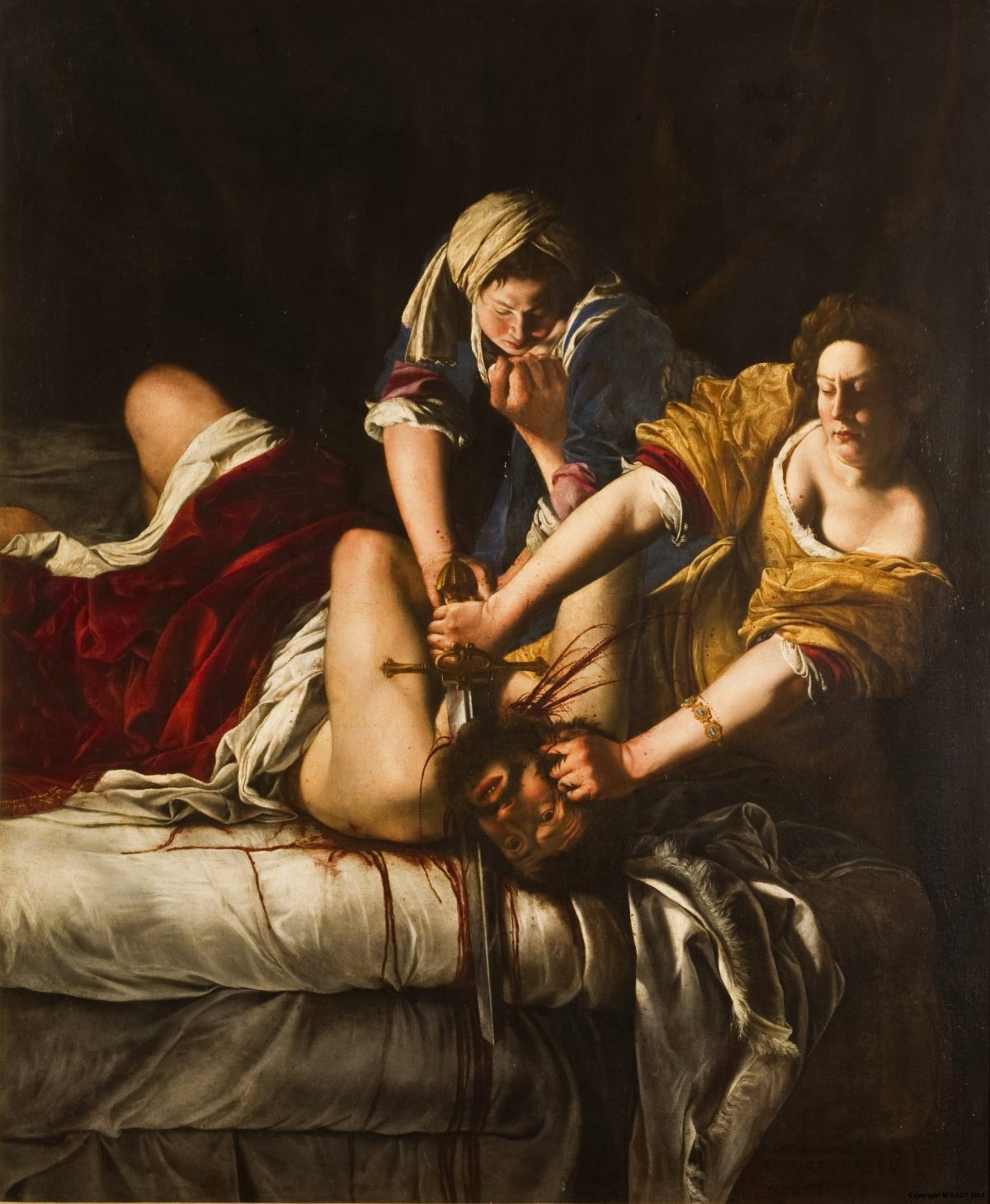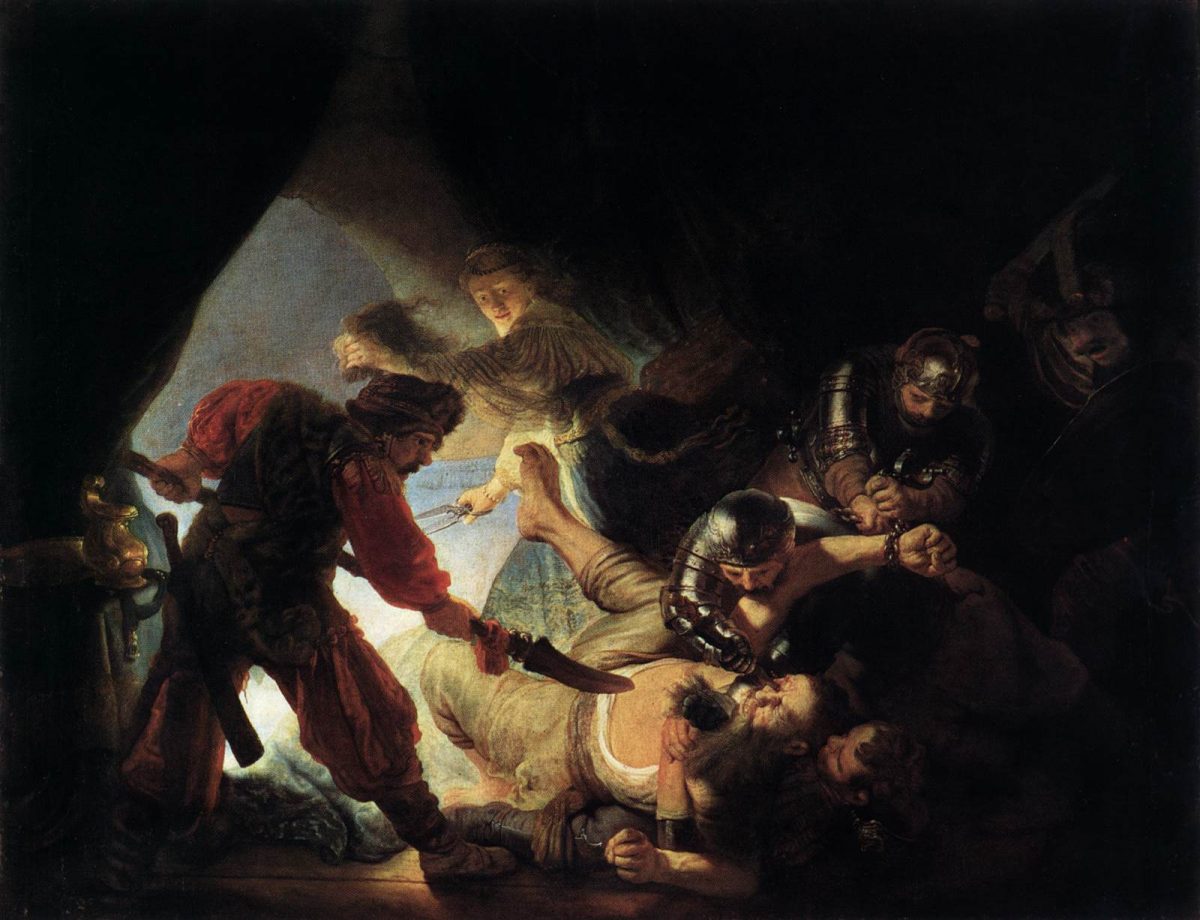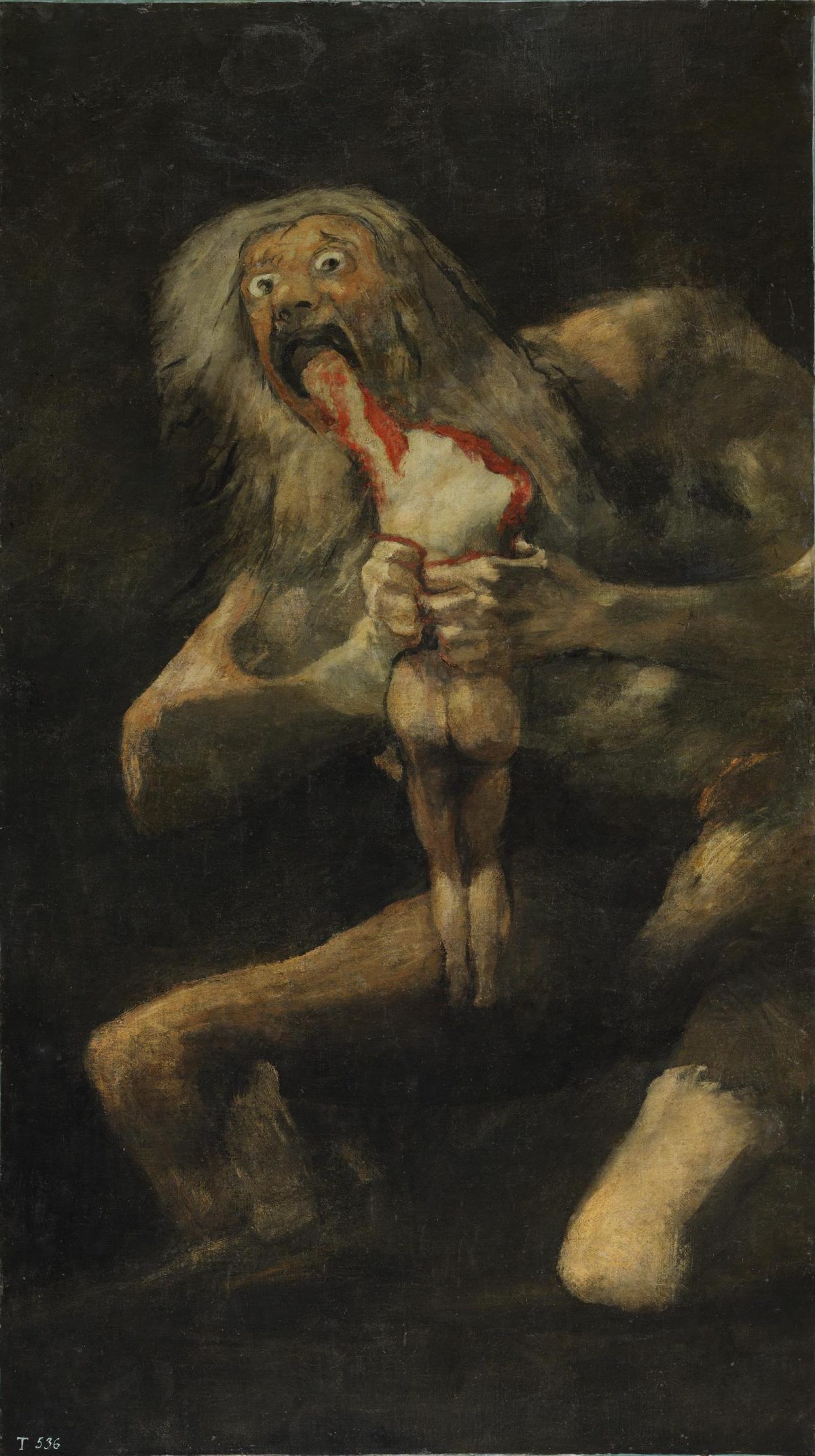Other than beauty: art history has often seen fierce, violent, and brutal paintings. We see in this post three of the most violent and brutal paintings in the whole history of art.
Between myth and narration: the most brutal paintings
Artemisia Gentileschi, Judith beheading Holofernes

The Judith, who beheads Holofernes by Artemisia Gentileschi (Rome, 1593 – Naples, 1654), has become almost a symbol of seventeenth-century violent art. This, especially since the author of the painting, is a woman. The scene refers to the most famous episode of the history of the biblical heroine, Jewish leader and opponent of the Assyrian army, commanded by Holofernes.
Artemisia Gentileschi made a couple of versions of this painting: both produced in Florence. That of Naples was painted for the noblewoman Laura Corsini. That of the Uffizi in Florence was destined to the Grand Duke Cosimo II de ‘Medici.
Rembrandt, The Blinding of Samson

The story of the biblical hero Samson is in the Book of Judges: a man of proverbial and impressive strength. He had married a Philistine woman, but the marriage was contrary to the wishes of her parents. The reason was that Samson, as Jew, was naturally an enemy of the people of the Philistines.
The clash between the beloved’s father and Samson will lead to chilling consequences, including the killing of more than 1000 Philistines and the blinding of Samson.
In this painting, preserved in Frankfurt, Rembrandt van Rijn (Leiden, 1606 – Amsterdam, 1669) depicts the episode of blindness. Some Philistine soldiers hold him while another threatens him with a pike. One is poking an eye with a dagger, while Samson writhes in pain. The violence of the episode is even stronger thanks to the chiaroscuro with strong gradations, typical of the Rembrandt of the thirties.
Francisco Goya, Saturn Devouring His Son

The God Saturn (Cronus for the Greeks), king of the gods, having learned from his parents Gea and Uranus that one of his children would have ousted him, had the idea of devouring them so as not to let any of them chase him from the throne. However, his destiny will be inevitable. Jupiter (Zeus) managed to escape secretly from the massacre (Saturn’s wife, Rhea, begot him) and, when he became an adult, he returned to defeat his father.
The work is part of the cycle that went down in history as the Pinturas Negras (“black paintings”) because they are all characterized by the use of very dark colors.
For this painting, interpretations have been provided that go beyond the mere mythological episode and its more traditional readings. Saturn is also God of time, and myth is a metaphor of time that devours everything. In particular, it could be an allegory of madness or even a sarcastic reading of the political situation of the time.